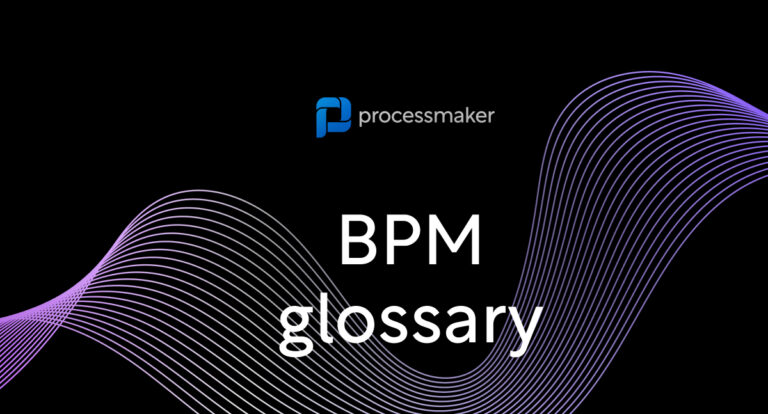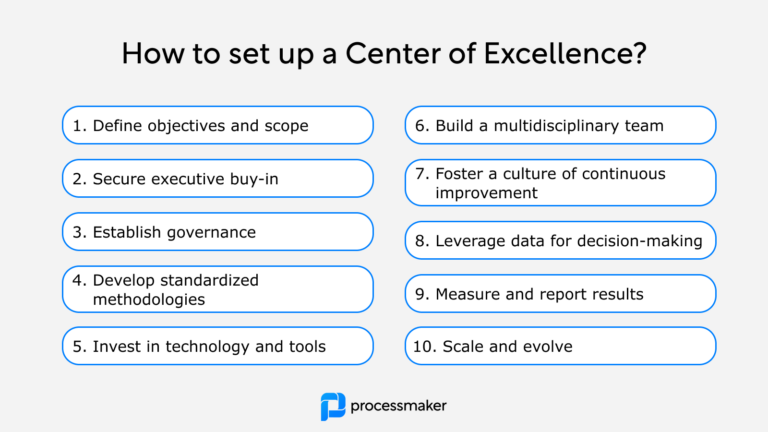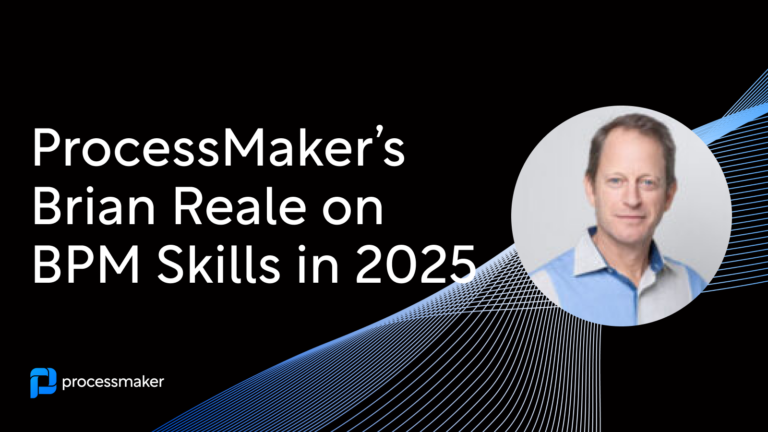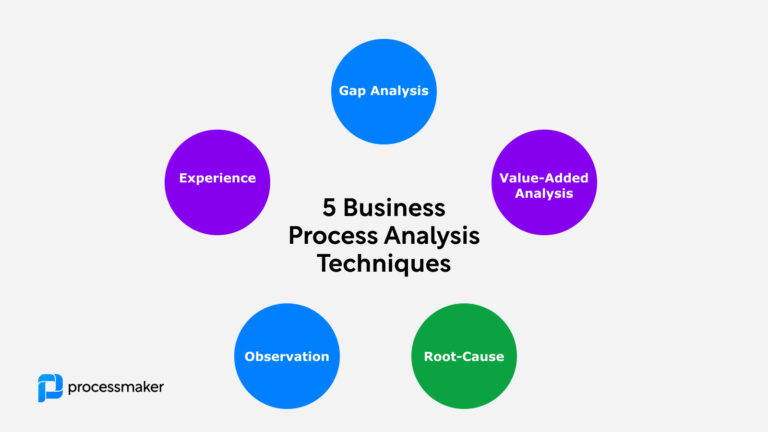Activity
Processes can be broken down into smaller and smaller subsections. An activity is the smallest unit of a process that a business process team chooses to illustrate in their diagrams. It can be as simple as approving a purchase or capping a bottle on a production line. It can also be more complex, such as filling out a form or assembling a chair, which requires multiple steps.
Automation rate
Automation rate refers to the amount of work that is completed automatically in contrast to human manual work. One area where this is commonly assessed is repetitive, high-volume work such as invoice approvals. Automation rates are an excellent indicator of the potential for process automation – processes that start with low automation rates can gain great advantage from solutions such as RPA.
Automated process discovery
Automated process discovery is a broad field within business process management that covers any tools or automation methods that help you discover the “as-is” state of business processes in order to improve them.
Business orchestration and automation technologies (BOAT)
BOAT is an emerging class of software technologies designed to automate and orchestrate end-to-end business processes while seamlessly connecting various enterprise systems. BOAT platforms blend capabilities from technologies like BPA, RPA, and iPaaS, further integrating intelligence document processing, process mining, and specialized generative AI. These platforms provide a unified development and operations platform under a single license, making it an efficient solution for enterprise application leaders.
Bottleneck
In business operations, a bottleneck is a point of congestion in a production system that limits the overall capacity of the system. Bottleneck analysis is a key part of process optimization and operational excellence.
Business processes
Business processes are any tasks or workflows in a business organization that can be organized in sequential order into a process. In its most basic form, processes are any set of activities performed by a business that begins with an event, transforms data, materials, or business agreements, and yields a result.
Business process analysis
Business process analysis is a method of analyzing business operations and processes to find problems and improvement opportunities. It is often based on a multi-step framework to identify, map, and improve processes within a business unit or across an organization.
Business process automation
Business Process Automation (BPA) involves the use of technology to execute recurring tasks or processes in a business where manual effort can be replaced, thereby increasing efficiency and reducing costs. By automating these workflows, organizations can streamline operations, ensure consistency, and free up employees to focus on more strategic work.
Business process documentation
Business process documentation is a comprehensive guide that details all necessary actions for task completion or process execution. It allows for ongoing tracking, understanding, and analysis of processes, acting as an essential blueprint for business operations. This documentation aims to enhance process efficiency, preserve institutional knowledge, and foster improvement and streamlining, thus reducing uncertainty and boosting productivity.
Business process improvement
Business process improvement (BPI) is the practice of incremental improvement of processes. There are various techniques, including the widely used Six Sigma approach. BPI is typically limited to a project framework and may be repeated multiple times throughout the life of the process.
Business process management
Business process management (BPM) is a practice used to improve organizational performance by reviewing, documenting, and redesigning business processes and systems for greater efficiency. Business process management software (BPMS) plays a crucial role in automating and improving these business processes. In more simple terms, BPM is a process-focused way to improve your business.
Business Process Management Systems (BPMS)
Business Process Management Systems (BPMS) are sophisticated software tools designed to automate, execute, and monitor business processes. These systems provide a comprehensive platform for organizations to model, analyze, and optimize their business processes, leading to improved efficiency, reduced costs, and enhanced customer satisfaction. BPMS typically includes features such as process modeling, workflow management, business rules management, and analytics. By leveraging BPMS, organizations can streamline their business processes, foster better collaboration, and make data-driven decisions that align with their strategic goals.
Business process mapping
Business process mapping is a technique used to visually display how work is done in workflow steps from start to finish. A process map can also be called by different names, such as a flowchart, functional process chart, or workflow diagram.
BPM Methodologies and Frameworks
BPM methodologies and frameworks offer a structured approach to business process management, helping organizations identify, analyze, and enhance their business processes. These methodologies ensure that processes are aligned with the organization’s overall strategy and goals. Some popular BPM methodologies and frameworks include:
- Six Sigma: A data-driven approach to process improvement that aims to reduce defects and variations in business processes.
- Lean: A methodology focused on eliminating waste and optimizing processes to boost efficiency and productivity.
- BPMN (Business Process Model and Notation): A standardized graphical representation of business processes that facilitates modeling and analysis.
- TOGAF (The Open Group Architecture Framework): A framework providing a structured approach to enterprise architecture and business process management.
By adopting these methodologies, organizations can achieve significant process improvements and drive operational excellence.
Case / Case ID
A case is a unique identifier assigned to a particular item within an IT system, such as an invoice or customer service ticket. Within process mining, case describes a business object that runs through a particular process reflecting exactly one process cycle. Each case can be identified by its individual case ID and can have attributes.
Conformance checking / Conformance analysis
Conformance checking, also known as conformance analysis, is the process of verifying that a business process is executed in accordance with its defined process model. This involves analyzing actual process execution data to identify any deviations or discrepancies from the expected process behavior. Conformance checking helps organizations pinpoint areas for process improvement, ensure compliance with regulatory requirements, and optimize their business processes. By regularly conducting conformance analysis, businesses can maintain high standards of process efficiency and effectiveness.
Conformance checking / Conformance analysis
Conformance checking is a method of comparing the execution of a business process against a predefined set of conditions, such as a business process model. It is used to assess the real state of processes and to identify any variations between the should be and the as-is behavior outlined. It is a key component of process mining, which is the application of data mining techniques to discover, monitor, and improve processes. Conformance checking can also be called conformance analysis or business process conformance checking.
Digital Twin
Digital twins are virtual representations of physical objects. The term was first used in the 1990s to describe a hypothetical computer model based on an object that could predict how that object would behave under different conditions. It has since grown in meaning, and today it is often used to refer to any virtual model of a physical object, whether or not it uses predictive analytics.
Event log
An event log is a structured file containing records and timings of events and activities within a computer database. They are typically used to track changes to the database, such as changes to the data structure, data entry records, and even user logins.
Enterprise automation
Enterprise automation can be described as the use of software and technologies such as robotic process automation (RPA), artificial intelligence (AI), machine learning (ML), etc. to comprehensively automate business processes.
Global Business Services
Global business services (GBS) is a term used to describe integrated, shared services that are used to support business units and organizations around the world. The GBS model is used widely in process mining use cases, where process intelligence can be centrally used to identify and implement process optimizations.
Happy path
Within business process management the ‘happy path‘ is a concept used to describe an ideal process flow. It is the path that a process should take when everything goes according to plan and no problems arise.
Intelligent Automation
Intelligent automation (sometimes called business process automation) is the systematic approach to research, improve, or replace inefficient work processes through automation. Often enterprise automation involves robotic process automation (RPA) or artificial intelligence (AI) based solutions replacing processes and tasks previously done by skilled employees.
Process analysis
Process analysis is a method of examining business operations and processes to find problems, bottlenecks, and improvement opportunities. It is often based on a multi-step framework to identify, map, and improve processes within a business unit or across an organization.
Process controlling / Process monitoring
Process controlling and process monitoring are critical components of business process management. Process controlling involves setting up controls and metrics to monitor and manage business processes in real time. On the other hand, process monitoring entails tracking and analyzing process performance data to identify areas for improvement and optimize business processes. By implementing robust process controlling and monitoring practices, organizations can ensure that their business processes are operating efficiently, effectively, and in compliance with regulatory requirements. This proactive approach helps in maintaining process excellence and achieving strategic business objectives.
Process discovery
Process discovery is a series of techniques and tools used to define, outline, and analyze business processes. It provides a measurable understanding of how people carry out daily operations and processes in the workplace. You can think of process discovery as the exploration of the “as is” of an organization’s existing processes while process redesign is the exploration of the “to be” goal of improved processes. Discovering processes is one of the most critical steps in understanding how the organization works and, frankly speaking, is a prerequisite for any successful automation project or business process transformation.
Process deviation
Process deviation in process mining is the identification of differences in a business processes. It involves analyzing process data to identify unexpected behavior that deviates from the expected process flow. This helps to identify areas for improvement to optimize the process and reduce inefficiencies.
Process excellence
Process excellence is the practice of continually improving the efficiency, effectiveness, and quality of business processes and operations through an operational excellence framework.
A critical aspect of process excellence is aligning and optimizing business process management (BPM) with the overall business strategy.
Process implementation
Business process implementation is the time to put your improved or re-engineered process into practice. Implementation is an ongoing task that requires careful planning and enough time to ensure process actors are well-trained, informed, and happy with the proposed changes.
Process intelligence
Process intelligence refers to the use of data analytics and machine learning techniques to gain insights into business processes and enhance their performance. This involves analyzing process data to identify trends, patterns, and correlations that can inform process improvement initiatives. By leveraging process intelligence, organizations can optimize their business processes, improve customer satisfaction, and reduce costs. Common applications of process intelligence include:
- Predictive Analytics: Using machine learning algorithms to predict process outcomes and identify potential bottlenecks.
- Process Mining: Analyzing process data to uncover areas for improvement and optimize business processes.
- Business Process Analytics: Utilizing data analytics to gain insights into business process performance and identify improvement opportunities.
By harnessing the power of process intelligence, businesses can drive continuous improvement and achieve operational excellence.
Process mining
Process mining is a technique used to discover, analyze, and improve business processes using data mining methods. Process mining is seen as an objective and data-driven way to evaluate the real state of processes and workflows in an organization.
Process mining software
Process mining software is any tool that allows you to discover, analyze, and improve business processes using computer science and data mining methods. The goal of process mining software is to provide an X-ray into your business processes – enabling process conformance, identifying potential bottlenecks, and improving efficiency.
Process modeling software
Process modeling is the graphical representation of business processes or workflows. There are various software solutions used to build process models for business processes.
Process monitoring
Business process monitoring is the proactive review and analysis of the performance of processes to identify potential bottlenecks, check conformance, and find improvement opportunities. Diligent monitoring helps you see if everything is going according to plan, identify errors, and make necessary changes along the way.
Process optimization
Process optimization is the practice of making a process more efficient or effective. It helps organizations reduce costs, improve customer satisfaction, and increase efficiency and productivity.
Process performance
Process performance refers to the measurement and evaluation of the efficiency and effectiveness of a business process. It involves assessing various metrics such as time, cost, quality, and output to determine how well a process achieves its intended goals and contributes to overall organizational performance.
Process reengineering
Process re-engineering involves analyzing existing processes and making significant changes to optimize them. This can include streamlining processes, eliminating unnecessary steps, and introducing automation technologies. Process re-engineering is an important aspect of process analysis because it can help streamline operations, improve efficiency, and reduce costs.
Process simulation
Process simulation is a method of analyzing and improving business processes using computer-based forecasting models. Process simulation allows businesses to explore “what if” scenarios, analyze the impact of changes to processes, and identify opportunities for improvement.
Root cause analysis
Root cause analysis is an effective problem-solving tool that helps to identify the main cause of an issue. In data science and engineering it is used to identify the underlying cause of a problem and devise an effective solution. In this comprehensive guide, we will look at the steps of root cause analysis, provide examples, and discuss common pitfalls.
Robotic Process Automation (RPA)
Robotic process automation is a form of business process automation where software robots are used to emulate human actions interacting with digital systems and software.
Shadow processes
Shadow processes are business tasks and workflows that are typically not formally tracked or monitored by the organization. This can include manual processes, undocumented activities, or informal practices that are not officially recognized or documented. Shadow processes can occur within an organization’s operations or extend to customer or supplier interactions. They can add complexity to existing systems, create inefficiencies, and lead to security and compliance risks.
Swivel chair process
A swivel chair process describes any business workflow or task where you need to manually enter the same data into different systems. Eliminating swivel chair activity from your business processes reduces manual work, creates efficiencies, and improves operational excellence.
Task mining
Task mining is a technology that helps companies automatically analyze how work is done on users’ desktops or workstations. It is a relatively young field within bigger categories of data science and business process management.
Task capture
Task capture technology collects and analyzes user interaction data from employees’ workstations to measure how work is done within a team or a company. Task capture is a core feature of task mining software.
Timestamp
A timestamp in process mining is a point in time at which an event or activity occurs in a business process. These timestamps are used to analyze the performance of a process and identify areas of improvement.
Workflow Analysis
Workflow analysis is the process of studying, understanding, and evaluating the sequence of tasks, activities, and interactions that make up a specific business process or operation within an organization.





